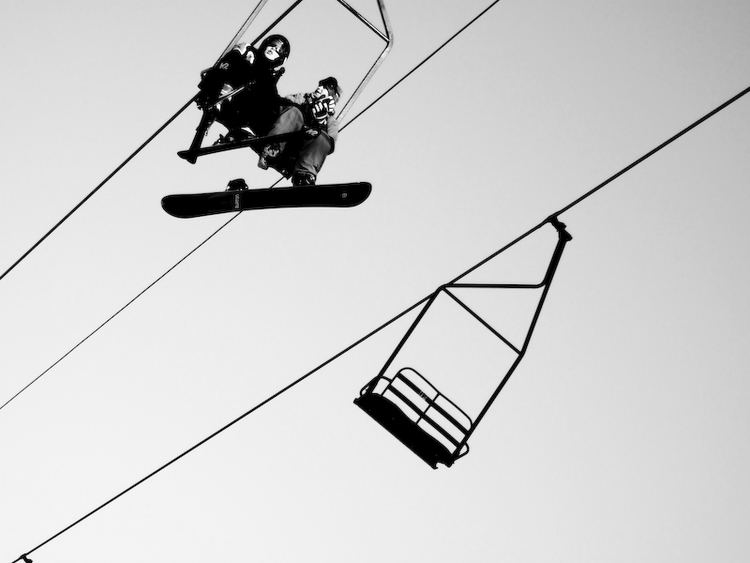Skiable area 2,150 acres (8.7 km) Longest run 3 miles (5 km) Base elevation 1,379 m | Top elevation 7,300 feet (2,225 m) Runs 87 Snowfall 11 m Phone +1 503-337-2222 | |
 | ||
Address Mt Hood National Forest, 14040 OR-35, Mt Hood, OR 97041, USA Hours Open today · 9AM–9PMSunday9AM–9PMMonday9AM–4PMTuesday9AM–4PMWednesday9AM–4PMThursday9AM–4PMFriday9AM–9PMSaturday9AM–9PM Similar Mount Hood, Mount Hood Skibowl, Timberline Lodge, Timberline Lodge ski area, Mount Bachelor ski area Profiles | ||
Mount Hood Meadows is one of the largest ski resorts in the U.S. state of Oregon and the largest ski resort near Mount Hood. It is located about 67 miles (108 km) east of Portland, and 35 miles (56 km) from Hood River along Oregon Route 35. It has both Alpine and Nordic ski areas and offers night skiing, lessons and equipment rentals. There are no overnight accommodations at Mount Hood Meadows itself, but a number of hotels and motels nearby offer shuttle services to the resort.
Contents
Trails
Elevation
Trails
History
In 1964, Mount Hood National Forest announced that a feasibility study was underway for a new ski area on the east side of Mount Hood. A group of Hood River businessmen, incorporated as Hood River Meadows, Inc., had raised $3,500 to finance the study. The group included Jack L. Baldwin of Cooper Spur Ski Area, L. R. Steeves, Dr. J. Allan Henderson, and Roland B. Leavens, among others.
On February 28, 1966—after more than two years of publicity—the Forest Service accepted a bid from another group including John Gray, and former Mount Hood Skibowl shareholders William Rosenfeld, Russell McJury and Shepard Wilson. The permit was for two ski lifts, one T-bar lift, a rope tow, and a day lodge. The first runs were cleared late summer 1966 and the Forest Service built the two mile entrance road from Bennett Pass. Highway 35 was in the midst of a four-year straightening project to remove the quaint, tight curves and make winter snow removal practical. Until it was finished mid-1968, skiers had to drive through Hood River to reach the ski area. The winter of 68/69 was one of the deepest snow falls on record, almost burying sections of the Blue Chair.
Skiers began using the resort named Mount Hood Meadows in December, 1967. Resort operators in Government Camp.were uneasy due to Meadow's intense publicity and the ultra-modern facilities. This concern lasted only a few weeks, as long lift lines redistributed disenchanted guests to the other areas. The original paved parking lot had a capacity of about 330 autos, but was enlarged by 1974 to hold about a thousand.
The T bar was installed on the west side of the lodge, probably in the lower portion of the current Daisy chairlift. The #1 chair—now called Blue—and #2 chair—called Yellow until 2007 until being renamed "Stadium", also the name of a central run below the lift—provide access to intermediate and advanced skill terrain. It was one of the two original lifts when Mount Hood Meadows opened in January, 1968. At that time it was referred to simply as “The North Lift”, rising 548 vertical feet from the base area and accessing terrain in the northern portion of the ski area’s permit area. The name was later changed to Yellow reinforced with painting of the chairs. For the 2007–08 season, a new drive and chairs removed the color; a naming contest resulted in it becoming "Stadium" which hosts many ski racing events each season. The new name tributes recreational skiers and snowboarders who run gates or participate in events. #3 chair was built in 1968, now Easy Rider, was called Red before the chairs were upgraded around 1995. In 1972, the T-bar was removed to build chair #4 (now Daisy).
Chair #5, Texas, was finished August, 1974 and was complicated by the deep snowpack present making it necessary to bulldoze and excavate snow to place some tower footings. Texas was replaced by Cascade Express, a quad detachable, in 1993. The top of Cascade Express is the highest point at the area, however additional snowcats take people nearly 1,500 feet up to 5 more double-blacks. The salvaged Hood River Meadows lift; replaced by the Hood River Express, was installed in 1996 as the Heather Canyon lift.
The Hood River Meadows (chair #6) opened in 1976, and was upgraded to a high speed Poma quad in 1995. Chair #6 was heavily lobbied against by conservation groups and outdoor clubs including appeals to the Region Forester and the National Forester by the Sierra Club.
Before the 2011–2012 season, a new high-speed quad chairlift, the Stadium Express, was constructed by Leitner-Poma to replace an older lift.
In 2012, Meadows installed RFID gates at every lift, to provide “hands free” access to guests, eliminating the number one guest complaint of “having to show my pass every time I get on a lift”. Meadows also launched new innovative products made possibly by the RFID technology, designed to better fit guests lifestyle, further strengthening our relationships with guests. Twenty chairs were added to the Shooting Star lift, increasing its uphill capacity by 30%. In 2013, Meadows recommitted itself to an improved learning experience, dedicating more terrain to beginner and lower intermediate lessons. “Ice melt” was installed under the SE corner of the Paradise Sun Deck to allow efficient removal of snow.
